Doubanjiang is a super delicious spicy bean sauce made with chilies and fermented bean paste. It is more salty and umami in flavor than Gochujang. This Ramen broth will be satisfying with or without the optional ingredients of veggie stock and Kombu. This recipe will work well in the winter conditions we typically encounter on our coldest trips (0–15ºF).
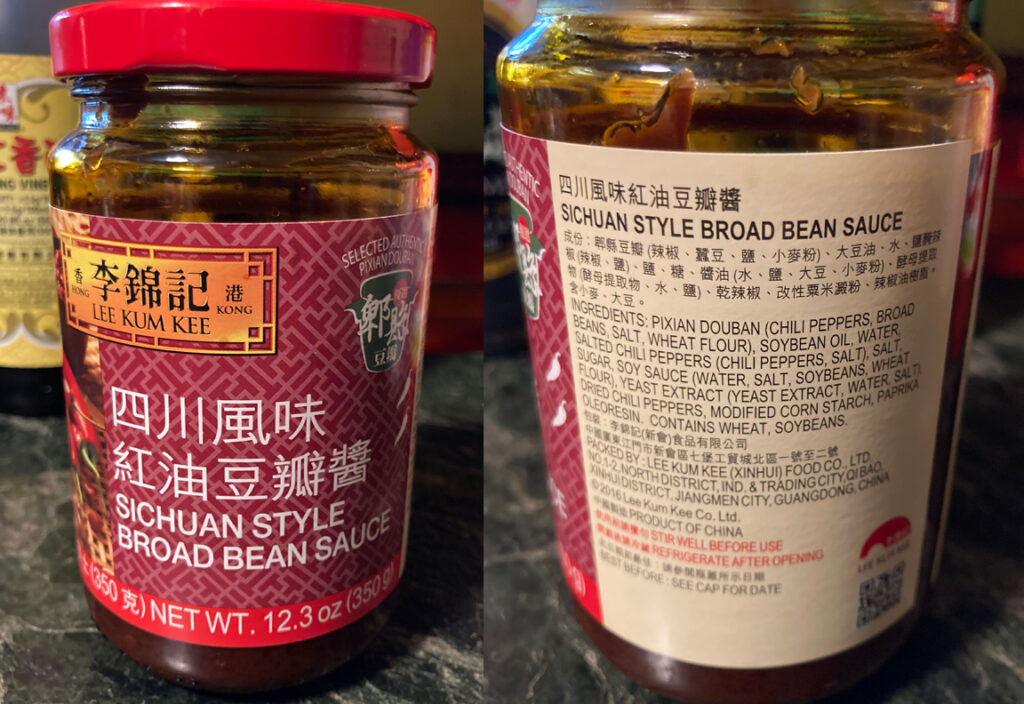
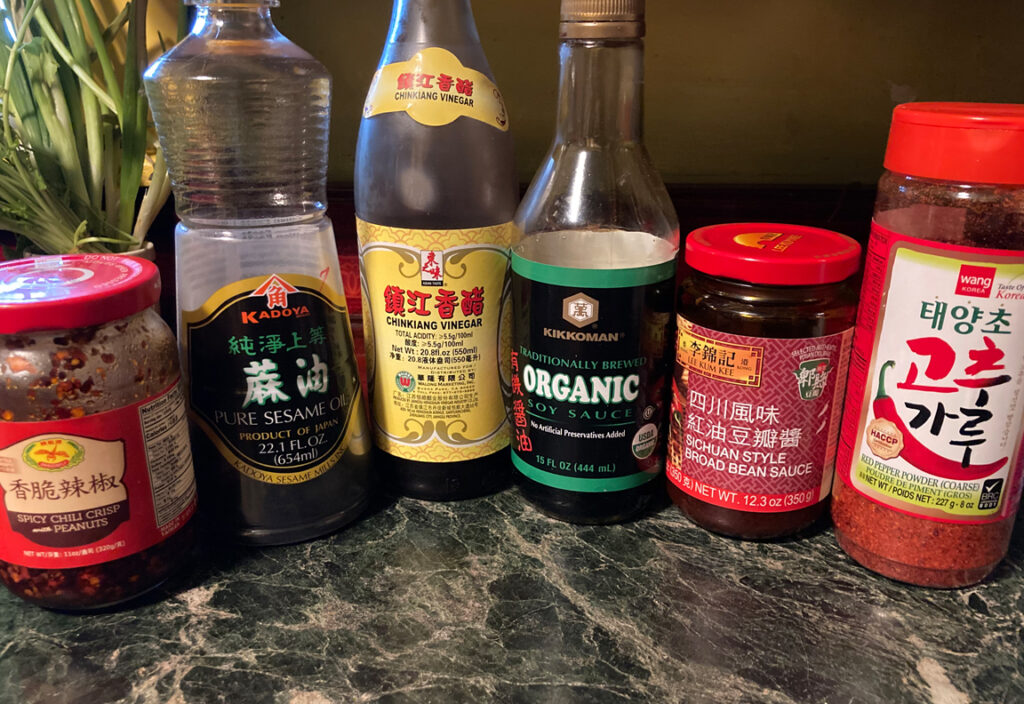
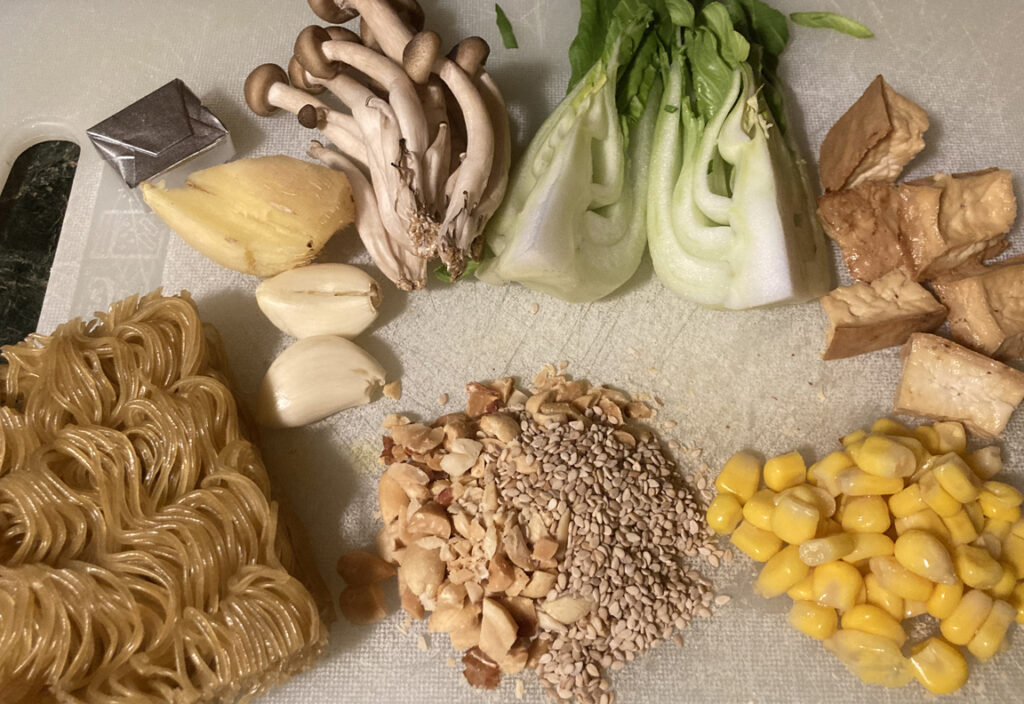
Ingredients
Pre-mixed Doubanjiang Sauce
1 tbsp Doubanjiang
1 tbsp Gochugaru (Korean pepper flakes)
2 tbsp Chili oil or Chili crisp
1 tsp Chinkiang vinegar
1 1/2 tbsp Soy sauce
For sauté
1 tbsp Sesame oil
2 pieces Garlic
1 tbsp Ginger
Shimeji (Brown Beech) Mushrooms
1/3 cup extra firm Tofu (pre-baked)
1/2 Bok choy
2 tbsps of Corn
Noodles
1 cube Veggie stock (optional)
1 small piece of Kombu (optional, increases umami flavor)
1.5–2.5 ounces of Ramen noodles
Toppings
2 tbsp Spring onion (chopped)
1 tbsp Roasted peanuts
1/2–1 tbsp Sesame seeds
Pre-trip Preparation
Preparation is especially easy for this dish.
- Mix sauce ingredients and put in 2 ounce container.
- Chop garlic and ginger and put in 1 once container with sesame oil.
- Bake tofu in oven for 30–40 muinutes at 400ºF.
- Bake Bok Choy, Shimeji (Brown Beech) Mushrooms, and corn for 20 minutes (Optional. I don’t.).
- Put sliced Bok Choy, Shimeji (Brown Beech) Mushrooms, corn, and tofu in bag.
- Put peanuts and sesame seeds in bag.
Directions
- Sauté garlic and ginger in sesame oil. Add bok choy and last add mushrooms and corn. Set aside in your cup.
- Boil water and add Ramen noodles. (If using veggie stock and Kombu, add it now.) Cook the noodles for less than the time on the package. If 4 minutes, boil for 3 minutes. Stir to loosen up noodles.
- Reduce water: You will likely have more water in the pot than you need and to avoid diluting the sause, you need to drain off the excess water. So have a Nalgene bottle ready. (If using Kombu, remove it now and pack it out. You only want the residual umani flavor, but not the actual seaweed in the final dish.)
- Add sauce to noodles and stir.
- Add veggies, mushroons, corn, tofu, and top with peanuts and sesame seeds.
Enjoy!
Weight
If you want to reduce weight, roast the Bok choy, corn and mushrooms.
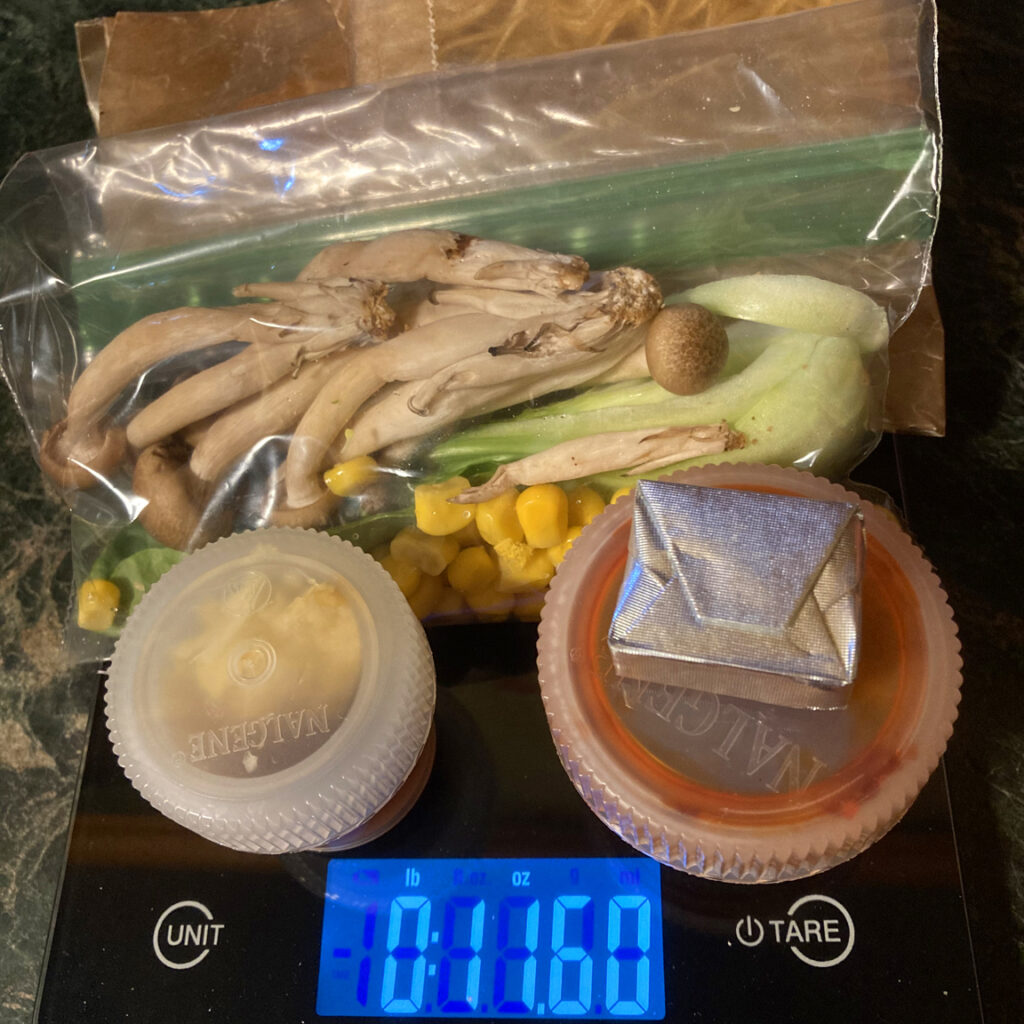
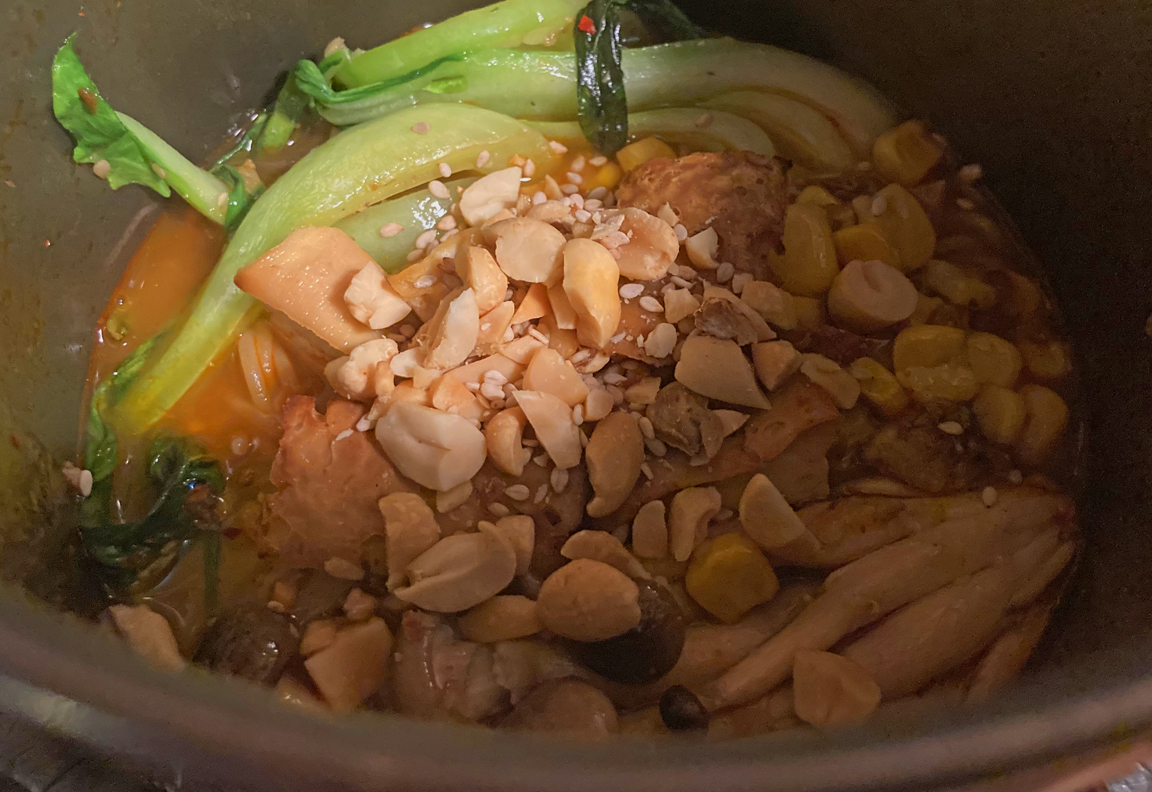
2 replies on “Doubanjiang Chili Ramen”
Is it possible to use this meal for a summer backpacking trip or will the vegetables likely go bad?
If you are going out for a one nighter, it should be fine. I suppose it depends on how hot it is where you are hiking and how much you will be exposed to the sun. You can get dried tofu at many of the Asian grocery stores (at least here in the Seattle area). Dried corn is easy to find (I just extract it from the Anderson House Frontier Soups Corn Chowder Mix available at most any grocery store. The mix has a long cook time, but the corn in the mix doesn’t.) That leaves the Bok Choy that will wilt in hot weather. It can be found freezed dried but its expensive and probably awful. Fresh and slightly crunchy Bok Choy is part of what makes this such a great meal. I would just plan to make it on the first night. I did a 5-day summer hike in the Cascades last year (J-section of the PCT) and had Bánh mì Sandwich for lunch and Phở with fresh Bok Choy for the first dinner. After that I was adding dried herbs to my meals. You can get large 100g packs of herbs (Kookoo and Ghormeh sabzi) from the middle eastern stores in the $5–6 range. But Doubanjiang Chili Ramen would be entirely different with herbs. You can see what was in my 5-day summer meal plan here: https://winterbackpacking.com/summer-backpacking-meal-ideas/. I plan to extend that same meal plan this year to do the K-section.